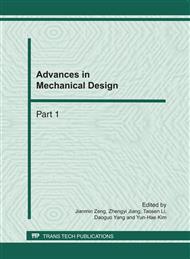p.1756
p.1761
p.1765
p.1769
p.1773
p.1777
p.1781
p.1785
p.1789
The Coupling Support Technology for Y Style Large Span Intersection in Deep Soft Rock Roadway
Abstract:
Because of crossing point’s large span, stress concentration clearly, result in parts of the intersection of poor support, construction and maintenance difficult, especially Y-Intersection is more serious part of deformation and failure. Through situ investigation and theoretical research, summarize the typical failure modes of the deep large Y-intersection, analyze the main reasons for destruction of the crossing point that is both sides of Bovine unconstrained and supported respectively. The new coupling supporting design—bolt-mesh-cable + truss to control the top of crossing point , while the key technology of the double control bolt is used to control the Crossing point.—is proposed.
Info:
Periodical:
Pages:
1773-1776
Citation:
Online since:
February 2011
Authors:
Price:
Сopyright:
© 2011 Trans Tech Publications Ltd. All Rights Reserved
Share:
Citation:


